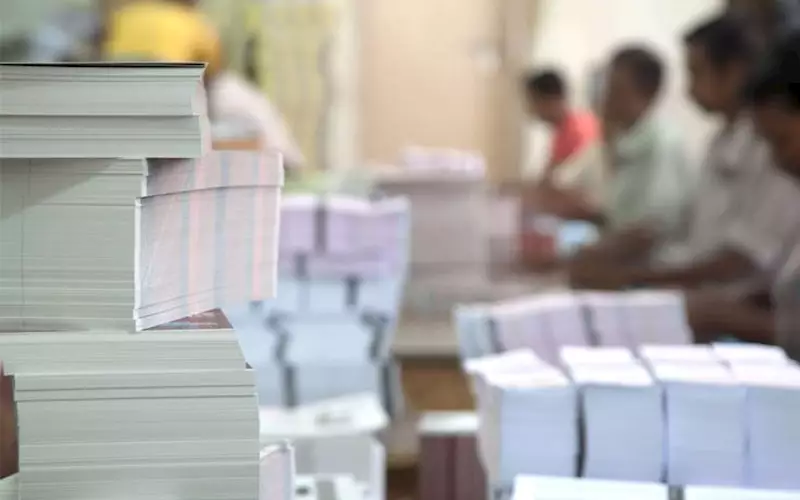Key trends in paper industry
Although there have been few developments in the past couple of months, the paper industry largely remains the same with no respite from paper price hikes.
31 Jan 2022 | By Aultrin Vijay
Paper prices continue to rise for the same reasons it did a few months ago, with no noticeable improvements. In a statement, Sona Papers mentioned that from 17 January, they would be "revising our product prices due to the increase in energy cost, which has impacted the paper production phenomenally”.
Sappi in Europe has announced price increases of 10%-25%, which will be implemented by the beginning of next month. Separately, Mitsubishi HiTec Paper said that it would implement a global price increase of 10% across all its speciality papers, effective 1 March.
Most of the paper majors say that the reason for these moves is the continued increase in the cost of gas, chemical raw materials, and logistics services. AS Mehta, the newly appointed president of Indian Paper Manufacturers Association (IPMA), highlighted an important concern, stating, "In view of the continuing coal shortage and non-availability of adequate railway rakes, paper mills in India are finding it extremely hard to source adequate and uninterrupted thermal coal supplies for their captive power plants."
Another development is the blockade against UPM commenced by the Finnish Transport Workers’ Union AKT to support the strikes of the Finnish Paperworkers’ Union and the Finnish Electrical Workers’ Union. The strike at the UPM Pulp, UPM Biofuels, UPM Communication Papers, UPM Specialty Papers, and UPM Raflatac units in Finland started on 1 January and had already been extended through January. During the blockade, the stevedores will not handle UPM’s paper and pulp.
Meanwhile, JK Paper president and director AS Mehta was elected president of the Indian Paper Manufacturers Association (IPMA) during its 22nd annual general meeting. IPMA has named Naini Papers managing director Pawan Agarwal as vice president of IPMA.
Another key appointment was Orient Paper and Industries’ appointment of Ashwin Ladhha as its new CEO from 14 January 2022. The company also decided to appoint him as the managing director of the company from 1 April 2022 in place of ML Pachisia, whose tenure of appointment as managing director of the company shall be expiring on 31 March 2022.
In a notification dated 30 December 2021, BGPPL stated that Yogesh Agarwal will be stepping down from his role as CEO-BGGPL and will assume the role of business head of the company. The position was filled by Rajeev Vederah, who is now the whole-time director of BGGPL and will be the reporting officer for Agarwal.
In yet another development in anti-dumping duties, the directorate general of trade remedies (DGTR) recommended the Ministry of Finance (MOF) to impose anti-dumping duty on decor paper being imported from China, for five years. The anti-dumping investigation was initiated by the authority based on a complaint filed by ITC (the company that accounts for close to 80% of the domestic production of decor paper). This is a key material used by the decorative industry.
For the past two years, there has been a raft of anti-dumping applications. These are mostly against imports from China and include cold-rolled flat steel, methyl acetoacetate, elastomeric filament, glass fibre, HFC blends, decor paper. At least six notifications were issued, with ITC and Jindal Stainless as the applicants.
The moot question is: are we qualitatively and quantitatively ready to stop all imports? Who is calculating, who is behind the planning?
Meanwhile, the latest India State of Forest Report 2021 - India’s Paper Industry has been published. The report states that India’s forest and tree cover has risen by 2,261 sqkm in the last two years with Andhra Pradesh growing the maximum forest cover of 647 sqkm.
Despite ISFR's claims of rising forest cover, there is little evidence to show that India's natural forest cover has actually increased. MD Madhusudan, ecologist and co-founder of the Nature Conservation Foundation, questioned the methods in question – especially the possibility that the data mapping may be showing India to be more forested than it really is. At the moment, there are two issues: definitions and unverifiable data. However, FSI has defended its forest cover estimate. It says it has done its field data tallied with satellite-based interpretation.
Good news? No clear verdict!











 See All
See All